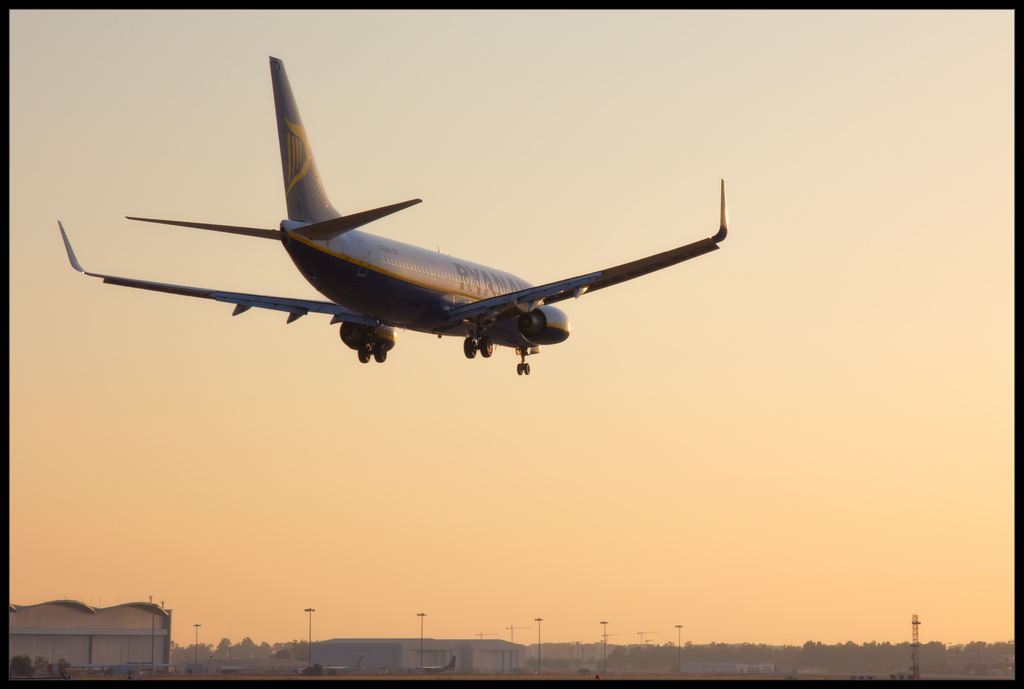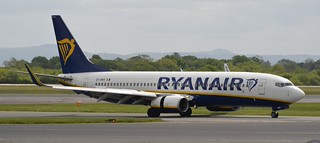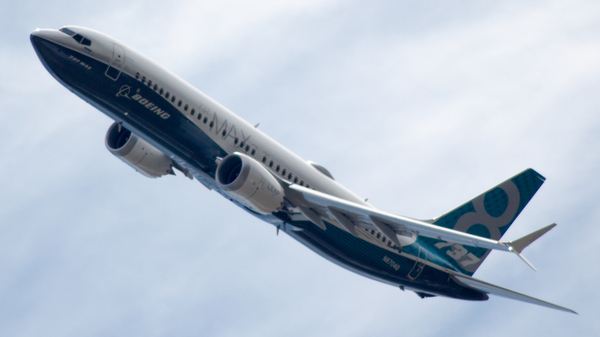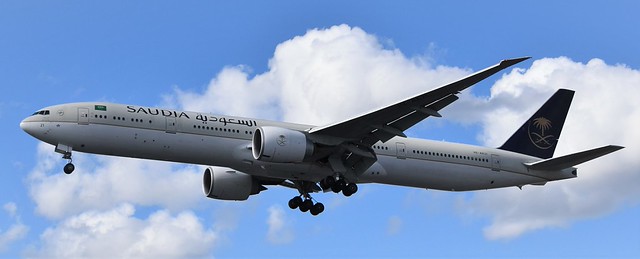Ryanair B738 near Manchester on Jan 14th 2017, control inputs to prevent overspeed cause two injuries
Last Update: May 10, 2018 / 16:34:23 GMT/Zulu time
Incident Facts
Date of incident
Jan 14, 2017
Classification
Report
Airline
Ryanair
Flight number
FR-3247
Departure
Stuttgart, Germany
Destination
Manchester, United Kingdom
Aircraft Registration
EI-EBW
Aircraft Type
Boeing 737-800
ICAO Type Designator
B738
The AAIB released their bulletin concluding the probable cause of the accident was:
The serious injuries suffered by a cabin crew member occurred because significant manual control inputs were applied in response to an impending overspeed, which resulted in the aircraft manoeuvring abruptly. An increasing headwind associated with a jetstream had caused the airspeed to rise. The narrow speed margins and handling sensitivities of the aircraft at high altitudes were contributory factors.
The AAIB reported one flight attendant received a fracture of her ankle and summarized the testimony by the commander (31, ATPL, 4,997 hours total, 4833 hours on type): "The commander reported that he was aware of the possibility of encountering a jetstream in the descent, but had not seen the airspeed increase to this extent before. He perceived that there was startle effect11 in his response due to both the rate of the airspeed increase towards MMO, and by the magnitude of the impending overspeed indicated by the speed trend vector. At the time, he believed he was managing the manoeuvre gently but with hindsight he suspected that startle effect caused him to exert more force on the control column than intended."
The AAIB analysed:
The FCTM highlights that the primary response to an aircraft overspeed is to use the speed brake, and that the autothrottle logic provides some overspeed protection through more aggressive speed control as the aircraft approaches VMO/MMO. The effects of this autothrottle logic had been demonstrated in the simulator to both pilots. The FCOM mentions that further overspeed protection is offered by the vertical mode transitioning from vnav path to lvl chg in conditions of impending overspeed.
The FCTM overspeed procedure also states:
‘pilots should leave the AP engaged unless it is apparent that it is not correcting the overspeed. However, if manual inputs are required, disengage the autopilot’.
The aircraft’s speed rose from 0.78 M to almost 0.82 M in 28 s. If the commander only realised the severity of the impending overspeed just before it occurred – and believed that the autopilot was not correcting the condition – then he may have felt compelled to disengage the autopilot, as described in the procedure.
Pilots are reminded during training that they must not hesitate to use a lower level of automation if required to maintain the aircraft’s flight path.
When taking manual recovery action at high altitude it is important to consider the need for careful handling. Whilst an overspeed is undesirable, there is typically a large margin between the onset of the overspeed warning and any undesired aerodynamic characteristics. Hence, there is often less risk in exceeding VMO/MMO slightly than there is in manual manoeuvring.
In this instance, the pilot considered that he was startled by the increasing speed and magnitude of the trend indication. Whilst he believed at the time that he was manoeuvring gently, the resulting overriding force on the control column was 42.76 lb – approximately double that required to disconnect the autopilot – and was large enough to cause a manoeuvre sufficient to unbalance the two cabin crew and for one to suffer a serious injury.
As well as recovery techniques for a high altitude overspeed event, some preventative measures exist, such as flying at a lower altitude, descending early, and slowing down when able do so – if necessary declining ATC requests to fly a higher speed. These activities, requiring active monitoring, may also reduce the risk of startle.
The commander commented that he learned from this experience, particularly in relation to managing the reduced operational margins and handling sensitivities of the aircraft at high altitudes.
Aircraft Registration Data
Incident Facts
Date of incident
Jan 14, 2017
Classification
Report
Airline
Ryanair
Flight number
FR-3247
Departure
Stuttgart, Germany
Destination
Manchester, United Kingdom
Aircraft Registration
EI-EBW
Aircraft Type
Boeing 737-800
ICAO Type Designator
B738
This article is published under license from Avherald.com. © of text by Avherald.com.
Article source
You can read 2 more free articles without a subscription.
Subscribe now and continue reading without any limits!
Read unlimited articles and receive our daily update briefing. Gain better insights into what is happening in commercial aviation safety.
Send tip
Support AeroInside by sending a small tip amount.
Related articles
Ryanair B738 at Faro on Nov 15th 2025, engine pod strike on landing, damage undetected for about 24 hours
A Ryanair Boeing 737-800, registration EI-ENG performing flight FR-5139 from Milan Bergamo (Italy) to Faro (Portugal), landed on Faro's runway 28…
Ryanair B38M near Brest on Dec 28th 2025, turbulence causes injuries
A Ryanair Boeing 737-8 MAX, registration EI-HGO performing flight FR-1121 from Birmingham,EN (UK) to Tenerife South,CI (Spain), was enroute at FL370…
Ryanair B738 at Bratislava on Dec 1st 2025, rejected takeoff due to bird strike
A Ryanair Boeing 737-800, registration EI-EVV from Bratislava (Slovakia) to Bari (Italy), was accelerating for takeoff from Bratislava's runway 04…
Ryanair B38M at Malaga on Nov 14th 2025, high rate of descent during go around
A Ryanair Boeing 737-8 MAX, registration EI-HGG performing flight FR-8506 from London Stansted,EN (UK) to Malaga,SP (Spain) with 93 passengers and 5…
Ryanair B738 at Madrid on Sep 17th 2025, loss of separation with military helicopter
A Ryanair Boeing 737-800, registration EI-DWX performing flight FR-6410 from Madrid,SP (Spain) to Sofia (Bulgaria) with 186 passengers and 6 crew,…
Newest articles
Tway B38M enroute on Jan 10th 2026, power bank thermal runaway, 8 injuries
A Tway Air Boeing 737-8 MAX, registration HL8579 performing flight TW-634 from Sanya (China) to Cheongju (South Korea) with 32 passengers and 6 crew,…
Saudia B773 at Islamabad on Oct 14th 2024, landed on wrong runway
A Saudi Arabian Airlines Boeing 777-300, registration HZ-AK21 performing flight SV-724 from Riyadh (Saudi Arabia) to Islamabad (Pakistan) with 399…
Subscribe today
Are you researching aviation incidents? Get access to AeroInside Insights, unlimited read access and receive the daily newsletter.
Pick your plan and subscribePartner

ELITE Simulation Solutions is a leading global provider of Flight Simulation Training Devices, IFR training software as well as flight controls and related services. Find out more.
SafetyScan Pro provides streamlined access to thousands of aviation accident reports. Tailored for your safety management efforts. Book your demo today
AeroInside Blog
Popular aircraft
Airbus A320Boeing 737-800
Boeing 737-800 MAX
Popular airlines
American AirlinesUnited
Delta
Air Canada
Lufthansa
British Airways








